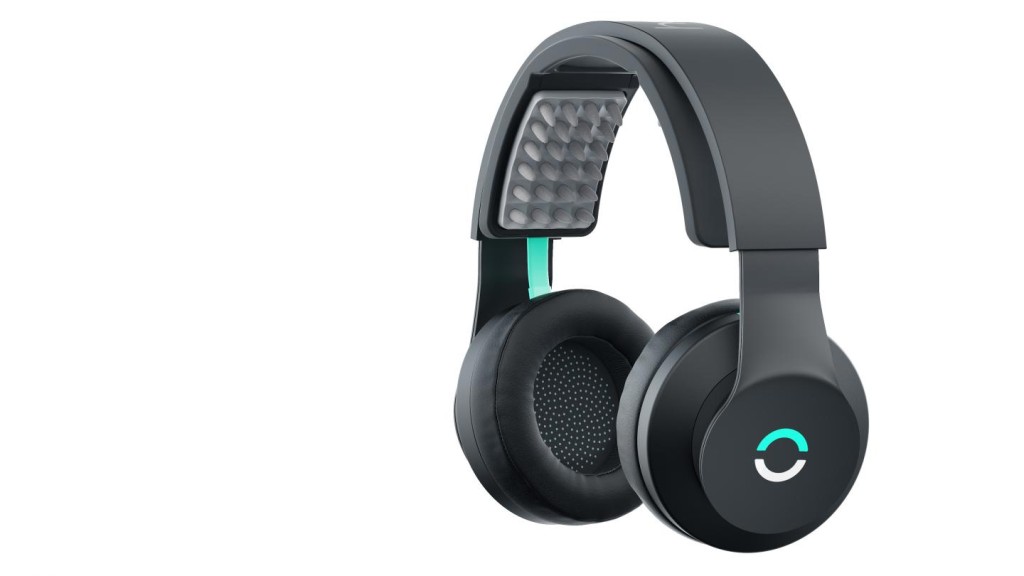Nicely done (for a media outlet) six week experiment to test efficacy of HaloNeuro‘s Halo Sport tDCS device. Elise’s takeaway is that she wishes the effect was a little more dramatic. But her trainer tells her that extra 1-1/2″ is actually significant. Certainly in pro sports settings I’m sure it would be. Nice overview of hypothetical understanding of how tDCS works. She also interviews HaloNeuro co-founder Daniel Chao and Olympic volleyball athlete Kim Glass. Elise on Twitter
Tag Archives: Daniel Chao
Halo: A headset that makes you learn faster | Should This Exist? (Podcast)
Neuroscientist Daniel Chao created a headset that hacks your brain with electricity so you can learn as fast as a kid again. It’s called Halo, and it helps you learn motor skills faster. Athletes use it; musicians too. But we’re not far from a future when Halo could help anyone master anything. Where will that take us? Host Caterina Fake leads the journey, joined by Comedian Baratunde Thurston and Quartz Editor in Chief Kevin Delaney, who help Daniel future-cast, and see his invention through the future best for humanity.
Halo Neuroscience Launches ‘Halo Sport’
Update 2/29/16. Halo Neuroscience launched the Halo Sport via ProductHunt. Details of the device are discussed in the comment section and includes input from CEO Daniel Chao and CTO Brett Wingeier. In a Medium article industrial designer Matty Martin talks about the challenges developing the Halo Sport. And, though not (yet anyway) peer reviewed, Halo Neuroscience has published the results of a few studies they’ve completed with the Halo Sport. Especially I found interesting Bihemispheric Transcranial Direct Current Stimulation with Halo Neurostimulation System Over Primary Motor Cortex Enhances Fine Motor Skills Learning in a Complex Hand Configuration Task (pdf).

We looked at Halo Neuroscience back in 2012, Halo Neuroscience – Amol Sarva, and knew they’d been testing a device for the last year. Today they announced the release of the Halo Sport which uses ‘neuropriming’ to increase athletic performance. At $549 it’s the most expensive neuro-device to come to market. It seems the target buyer is a high-end athlete.
Clicking on the get button takes you to two offers:
HALO SPORT PRO:
AVAILABLE TODAY
Halo Sport Pro is part of a service package designed for elite teams, trainers, and performance organizations.
and
HALO CHAMPIONS PROGRAM:
LIMITED CONSUMER RELEASE
Train like the pros. Be the first to pre-order Halo Sport and receive $200 off. Ships Fall 2016.
So I guess we’re in buzz-building mode, and the device will become available for anyone in the fall at around $349.
Follows is a clip from today’s Newsweek article. Click through to full story below.
As intriguing as the sports applications are, they only hint at what Halo might become. Chao says he will seek FDA approval to market Halo’s device as a way to help stroke victims recover their physical capabilities. And then, he says, a different version of Halo, which would send pulses into another part of the brain, will be able to improve memory and mental processing, giving users an advantage at work or school. At one point, he tells me some of Halo’s tests show it can “roll back cognitive aging by 25 years.” (He later seems to regret saying that, explaining that he prefers to stay focused on the sports applications.)
Halo Claims to Make You Jump Higher, Think Faster, Remember Longer
The Evolution Of Neurocentric Wearables | WT VOX
From an older post, but I found it in a tweet from Halo Neuroscience‘s Senior iOS engineer, Rich Lowenberg @richlowenberg. We met Halo Neuroscience back in May, 2014. My sense is we may be hearing more from them soon (though it’s just a hunch based on recent media mentions). If you’re in the San Francisco area, they are recruiting for a TES (transcranial electric stimulation) ‘Hand Strength Study‘.
Halo Neuroscience is working on technology to “boost brain function” and “[elevate] cognitive performance” via headband. Speaking to TechCrunch, Halo co-founder Amol Sarva explained that the company’s tech is being developed to offer not just a remedy but also an edge, as it “stimulates brain function in [both] sick people and healthy people.” He continued:
It makes the brain work better—a wide range of potential effects from accelerating learning to improving body movement control […The] field is a big new area—not just sensing things in the brain or ‘reading’ it, but sending waves into the brain and ‘writing’ to it […] Nobody believed it was real! We didn’t either. Until we tried it.
Halo uses a version of the popular transcranial direct-current stimulation (tDCS) method, which involves “priming” or “inhibiting” brain cells’ firing patterns by sending low levels of electricity through electrodes in certain scalp areas. This makes particular brain cells more or less likely to fire, therefore targeting brain activity toward certain performance standards.
